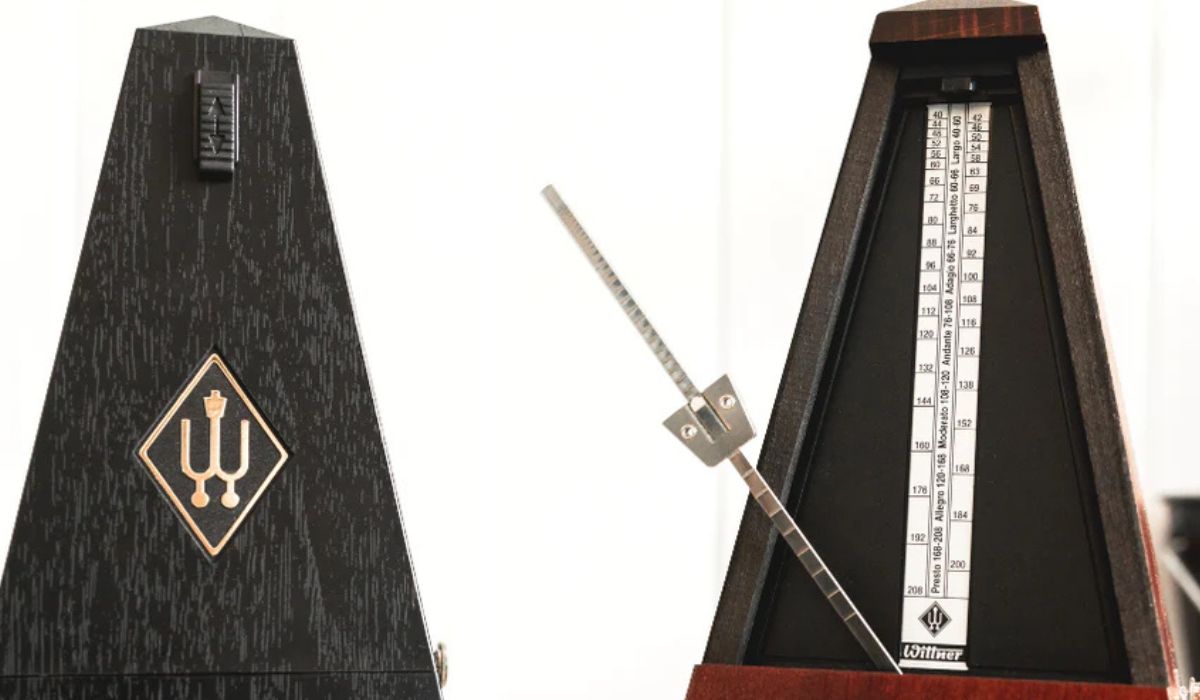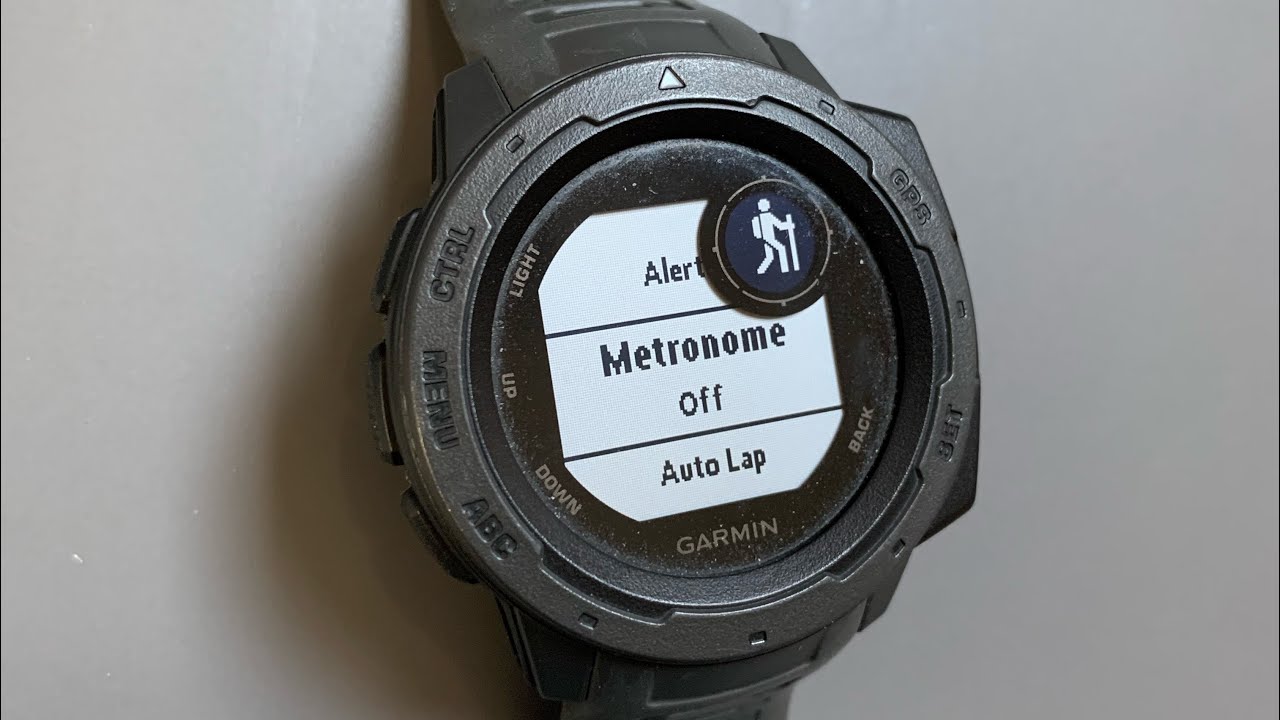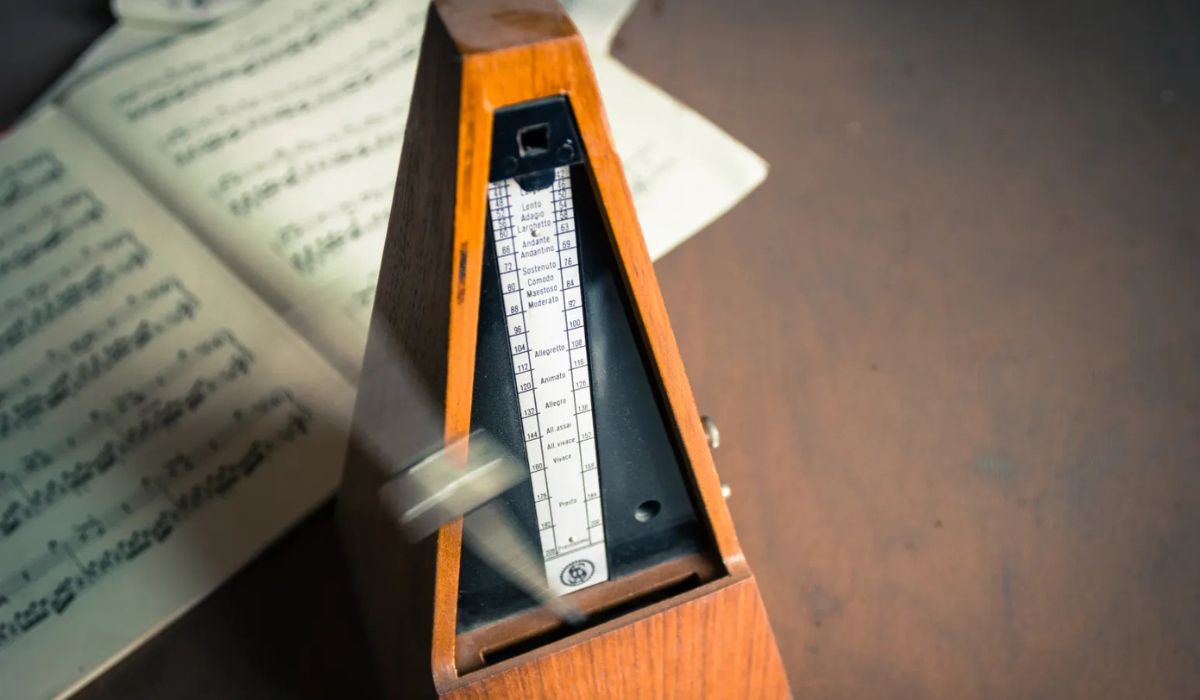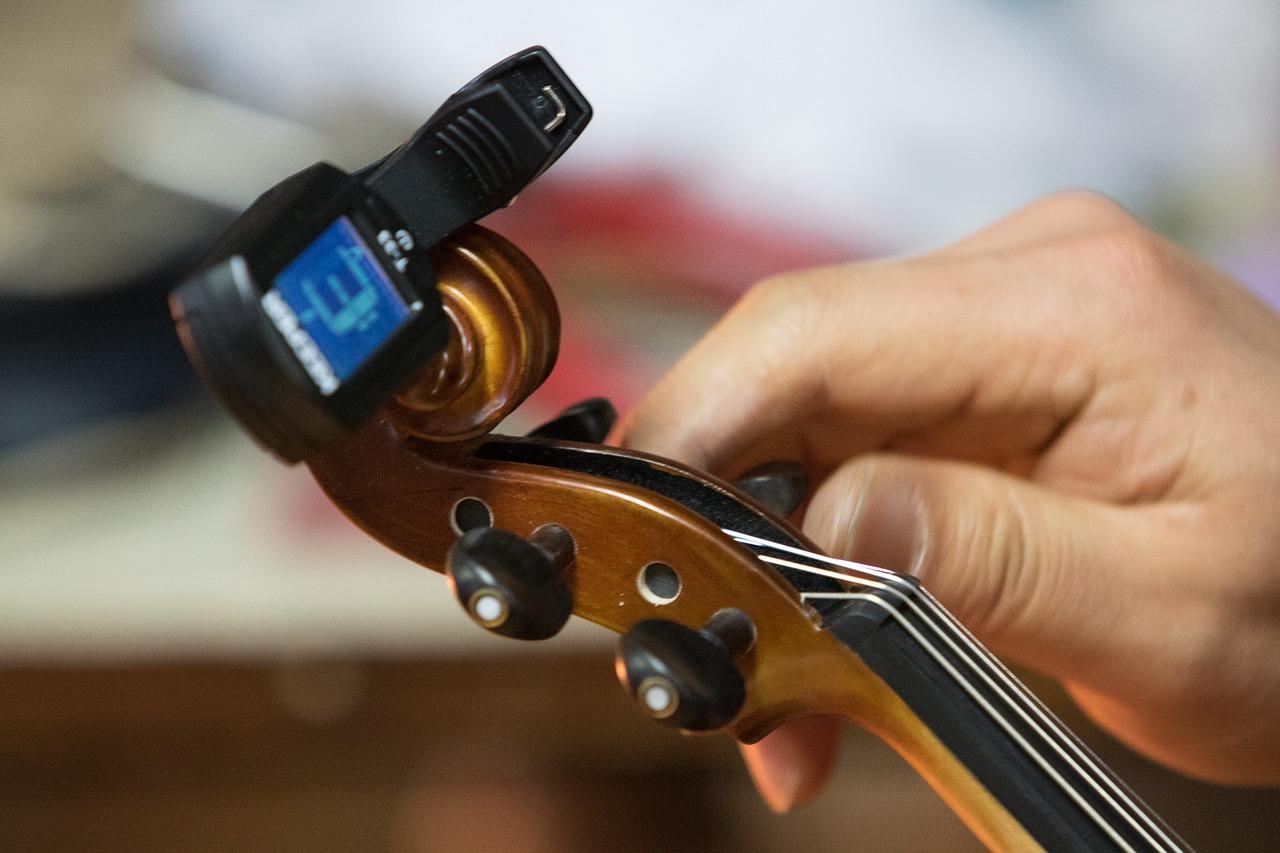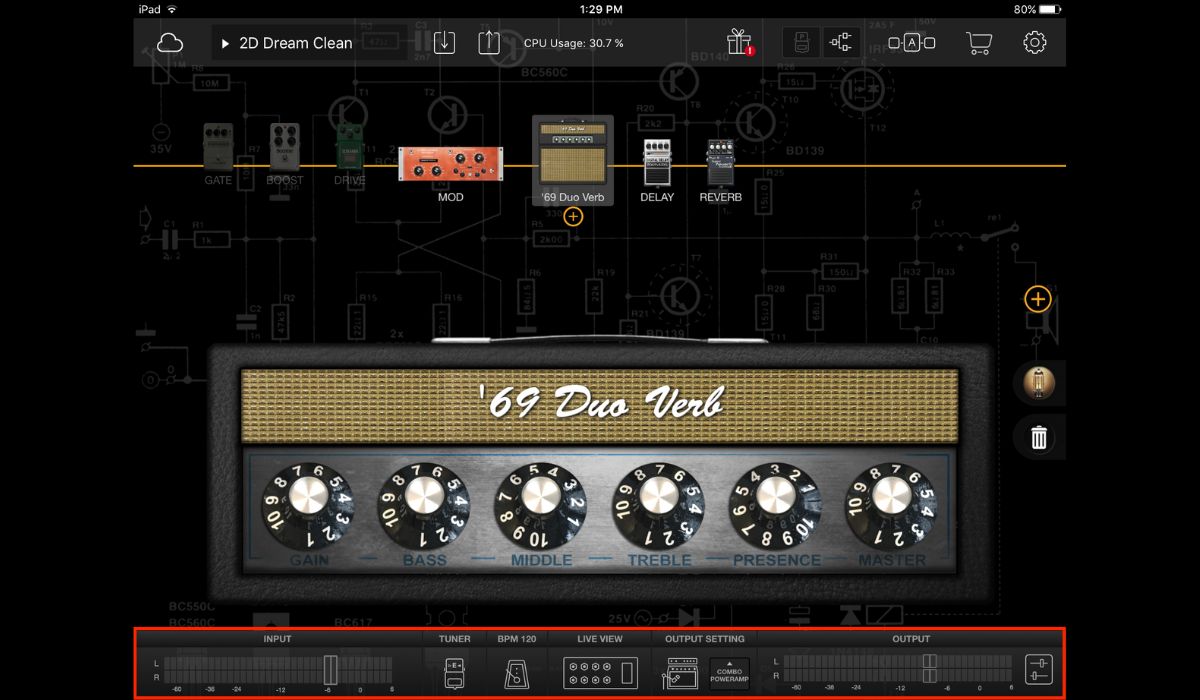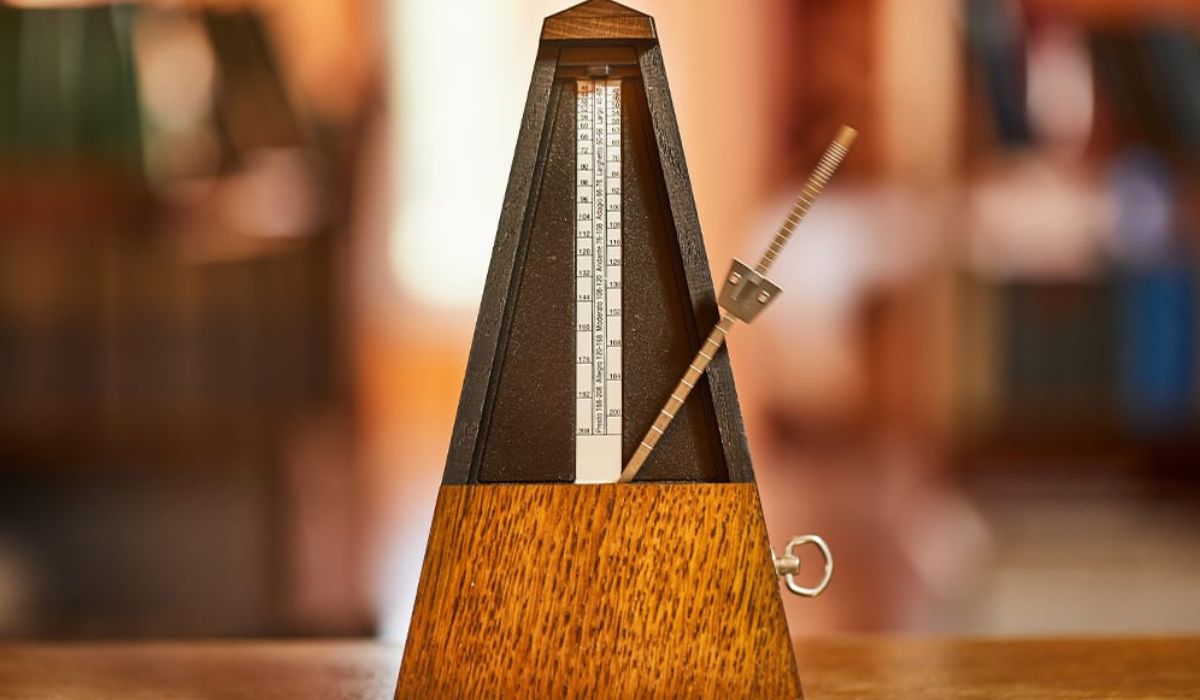Home>Production & Technology>Metronome>How To Use Metronome In Krome
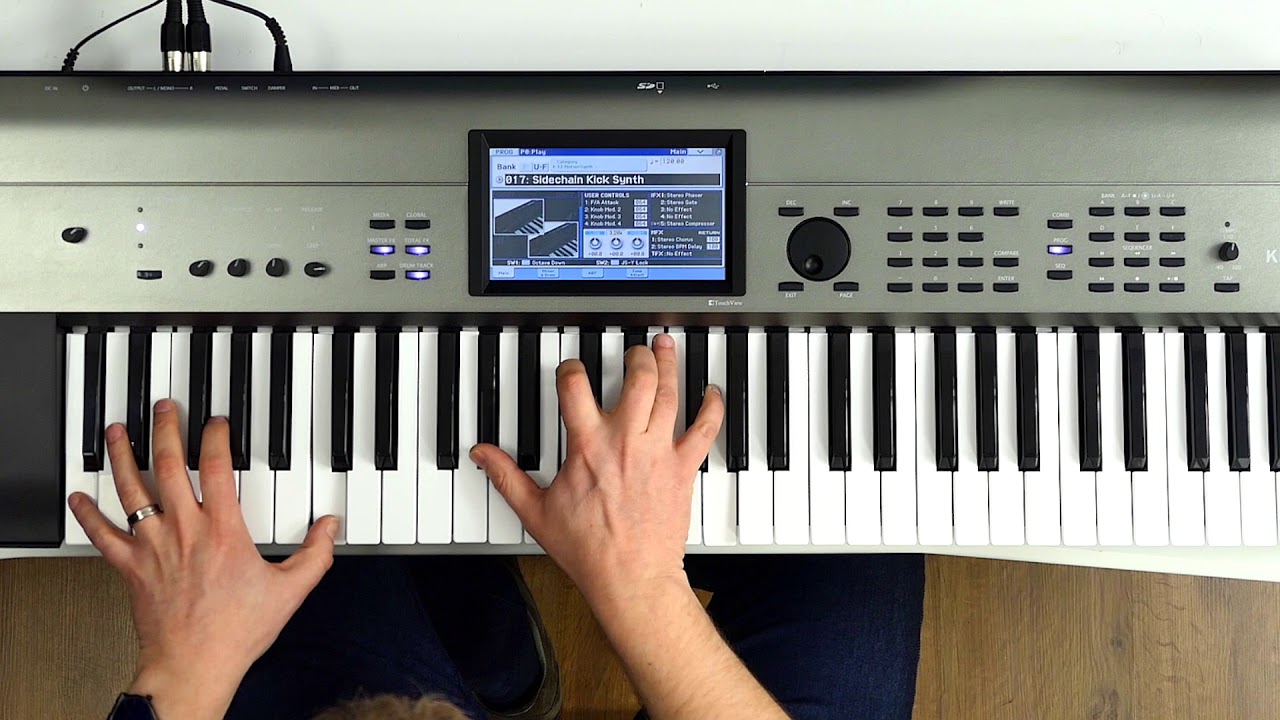

Metronome
How To Use Metronome In Krome
Modified: January 22, 2024
Learn how to utilize the metronome feature in Krome to improve your rhythm and timing. Enhance your musical performance with this essential tool.
(Many of the links in this article redirect to a specific reviewed product. Your purchase of these products through affiliate links helps to generate commission for AudioLover.com, at no extra cost. Learn more)
Table of Contents
- Introduction
- What is a Metronome?
- Benefits of Using a Metronome
- Getting Started with the Krome Metronome
- Adjusting the Tempo
- Selecting the Time Signature
- Utilizing Click Sounds
- Customizing Metronome Settings
- Using Metronome in Practice Sessions
- Tips and Techniques for Effective Metronome Use
- Common Mistakes to Avoid
- Conclusion
Introduction
Welcome to the world of music! Whether you are a beginner or an experienced musician, one tool that will greatly enhance your practice sessions and performances is a metronome. In this article, we will explore the Krome metronome, a versatile and powerful tool that can help you maintain a steady rhythm and improve your timing.
A metronome is a device that produces regular beats or clicks at a consistent tempo. It is an essential tool for musicians of all genres, as it helps develop a strong sense of rhythm and precision. The Krome metronome takes this concept to a whole new level, offering a wide range of features and customization options to cater to your specific musical needs.
Whether you play the piano, guitar, drums, or any other instrument, using a metronome can greatly enhance your musical abilities. It acts as a musical guide, keeping you on track and helping you play with accuracy and confidence. By practicing with a metronome, you can improve your timing, develop a more disciplined playing style, and even enhance your ability to perform complex rhythms.
The Krome metronome, in particular, is known for its user-friendly interface and advanced functionality. It offers a variety of options to adjust the tempo, select time signatures, and customize click sounds to suit your preferences. Whether you prefer a traditional tick, a digital beep, or even a drum sound, the Krome metronome has got you covered.
In the sections to follow, we will delve into the various features and settings of the Krome metronome, providing you with a comprehensive guide on how to use it effectively. So, let’s dive in and discover the wonders of the Krome metronome!
What is a Metronome?
A metronome is a device used by musicians to help keep a consistent tempo or beat while practicing or performing music. It provides a rhythmic pulse, typically in the form of audible clicks, that can be adjusted to different tempos and time signatures. The main purpose of a metronome is to aid musicians in developing a sense of timing, precision, and rhythmic accuracy.
In the past, metronomes were mechanical devices that utilized a pendulum or a weighted arm to produce the rhythmic ticks. Nowadays, digital metronomes have become more popular due to their convenience and additional features. The Krome metronome falls into this category, offering musicians a versatile and powerful tool to enhance their practice sessions.
Metronomes are commonly used by musicians of all levels and across various musical genres. They are especially useful for beginners who are still developing their sense of rhythm and tempo. By practicing with a metronome, beginners can learn to play in sync with a steady beat, which helps them build a solid foundation for their musical skills.
For more experienced musicians, a metronome can be used to challenge and improve their timing abilities. It can be set at faster tempos or odd time signatures to push the musician’s boundaries and help them develop more complex rhythmic patterns. Additionally, a metronome can be a valuable tool during ensemble rehearsals, as it ensures that all musicians are playing in sync with each other.
Overall, a metronome is an indispensable tool for musicians of all levels. It helps to develop a stronger sense of timing, improves rhythmic accuracy, and enhances overall musical performance. Now that we have a clear understanding of what a metronome is, let’s delve into the many benefits of using the Krome metronome in your musical journey.
Benefits of Using a Metronome
Using a metronome, such as the Krome metronome, offers a multitude of benefits to musicians. Let’s explore some of the key advantages that come with incorporating this invaluable tool into your practice routine:
- Develops Timing and Rhythm: One of the primary benefits of using a metronome is that it helps to develop a strong sense of timing and rhythm. By playing in sync with a steady beat, you can improve your ability to stay in time and maintain a consistent tempo.
- Enhances Precision: A metronome serves as an accurate guide, ensuring that you are playing each note or phrase at the right moment. This helps you refine your precision and play with greater accuracy.
- Builds Discipline: Practicing with a metronome requires discipline and focus. It forces you to stay in sync with the beat and remain consistent throughout your playing. This discipline can have a positive impact on your overall musical development.
- Improves Technical Skills: Playing with a metronome challenges your technical skills, as it exposes any inconsistencies or weaknesses in your playing. By practicing with precision and accuracy, you can refine your technique and improve your overall musical abilities.
- Develops a Sense of Pulse: The metronome helps you develop a strong internal sense of pulse or beat. This translates into better ensemble playing, where you can synchronize with other musicians and maintain a cohesive sound.
- Expands Musical Repertoire: Practicing with a metronome allows you to tackle complex rhythms and tempos that are often found in more advanced musical pieces. By mastering these challenging elements, you can expand your musical repertoire and take on a wider range of musical styles.
- Increases Confidence: As you become more comfortable with playing in time with a metronome, your confidence as a musician will increase. This newfound confidence will translate into more confident performances, both in practice and on stage.
- Offers Flexibility: The Krome metronome provides flexibility in terms of tempo, time signatures, and click sounds. This versatility allows you to tailor the metronome settings to suit your specific musical needs and preferences.
By consistently incorporating the Krome metronome into your practice routine, you can reap these benefits and take your musical skills to new heights. Now that we understand the advantages of using a metronome, let’s explore how to get started with the Krome metronome and make the most out of its features.
Getting Started with the Krome Metronome
The Krome metronome is a powerful tool that can help musicians of all levels improve their timing and rhythm. To get started with the Krome metronome, follow these simple steps:
- Power On: Turn on the Krome metronome by pressing the power button or switch.
- Select Tempo: Use the tempo control buttons to adjust the speed of the metronome. You can increase or decrease the tempo to match your desired playing speed.
- Choose Time Signature: Select the desired time signature using the time signature control buttons. The Krome metronome supports a variety of time signatures, such as 4/4, 3/4, 6/8, and more.
- Set Click Sound: Experiment with different click sounds to find one that suits your musical style and preference. The Krome metronome offers a variety of click sounds, ranging from traditional ticks to digital beeps and even drum sounds.
- Start Practice Session: Once you have set the tempo, time signature, and click sound, you are ready to start your practice session. Begin playing your instrument, ensuring that your notes align with the metronome’s beats.
- Gradually Increase Difficulty: As you become more comfortable with playing in time with the metronome, challenge yourself by increasing the tempo or practicing complex rhythms. This will help you build your skills and expand your musical abilities.
- Practice with Different Musical Styles: Experiment with playing various musical styles and genres while using the Krome metronome. This will help you develop a versatile and adaptable sense of timing, which is crucial for professional musicians.
- Record and Analyze: Use the recording feature on your digital device or a separate recording device to record your practice sessions. Analyze your performance, paying attention to any areas where your timing may be off. By identifying these areas, you can specifically target them during your practice sessions and work towards improvement.
- Utilize Metronome in Ensemble Rehearsals: If you are part of a band or ensemble, bring your Krome metronome to rehearsals. It can help ensure that everyone is playing in sync and staying on tempo, creating a cohesive and tight sound.
Remember, consistency is key when using the Krome metronome. Incorporate it into your practice routine regularly to reap the maximum benefits. As you continue to practice with the metronome, you will notice significant improvements in your overall timing and rhythm. Let’s now explore how to adjust the tempo on the Krome metronome for a more personalized experience.
Adjusting the Tempo
One of the essential features of the Krome metronome is the ability to adjust the tempo. The tempo refers to the speed at which the metronome clicks or beats. Here’s how you can easily adjust the tempo on the Krome metronome:
- Tempo Buttons: On the Krome metronome, you will find dedicated buttons or controls specifically for adjusting the tempo. Look for buttons labeled with “+” and “-” signs or a dial that allows you to increase or decrease the tempo.
- Incremental Changes: To gradually increase or decrease the tempo, press the “+” or “-” button multiple times or turn the dial in small increments until you reach the desired speed. Take your time to find a tempo that is comfortable for you.
- Preset Tempos: Some metronomes, including the Krome metronome, offer preset tempos that you can directly select. These tempos are often labeled with common music terms such as “Largo,” “Andante,” “Allegro,” etc. This can be helpful when you want to quickly set a specific tempo without having to adjust it manually.
- Tap Tempo Function: Many digital metronomes, including the Krome metronome, also have a “Tap Tempo” function. This feature allows you to manually input the desired tempo by tapping a button or a footswitch in rhythm. The metronome analyzes the timing of your taps and sets the tempo accordingly.
- Metronome Apps: If you are using a metronome app on your smartphone or tablet, adjusting the tempo is usually done by swiping or sliding a virtual slider on the screen. Some apps even allow you to input the desired tempo through a numerical keypad.
Remember, when adjusting the tempo, start at a comfortable pace and gradually increase it as you become more proficient. It is important to challenge yourself but also ensure that you can play accurately and in time with the metronome. Practicing at different tempos will help you develop versatility and adaptability in your playing.
Now that you know how to adjust the tempo on the Krome metronome, let’s move on to the next feature: selecting the time signature.
Selecting the Time Signature
The time signature is a crucial element in music notation that indicates the rhythmic structure of a piece. It consists of two numbers written as a fraction, such as 4/4, 3/4, or 6/8. The Krome metronome allows you to select the desired time signature, ensuring that you practice or perform in the correct rhythm. Here’s how you can easily select the time signature on the Krome metronome:
- Time Signature Buttons: Look for dedicated buttons or controls on the Krome metronome that allow you to select the time signature. These buttons might be labeled with numbers or musical notation symbols such as “2/4,” “3/4,” “4/4,” and so on.
- Scrolling Function: Some metronomes, including the Krome metronome, might employ a scrolling function to select the time signature. By pressing a button or turning a dial, you can scroll through different time signatures and find the one that matches the piece you are practicing.
- Preset Time Signatures: Similar to preset tempos, the Krome metronome might offer predefined time signatures that you can directly select. These presets can be helpful when you are working on pieces that commonly use specific time signatures, such as waltzes (3/4) or blues (12/8).
- Custom Time Signatures: Some advanced metronomes, or software-based metronomes, allow you to input custom time signatures. If the Krome metronome offers this feature, you can input any time signature that suits the piece you are practicing, even if it’s uncommon or complex.
When selecting the time signature, it is important to match it with the piece’s actual time signature. This ensures that the beats and subdivisions align properly, helping you practice or perform with accurate rhythmic precision.
By using the Krome metronome to practice diverse time signatures, you will develop a solid understanding and internalization of different rhythmic structures. This will greatly enhance your musicality and enable you to confidently navigate through various styles and genres.
Now that you know how to select the time signature on the Krome metronome, let’s explore another important feature: utilizing click sounds.
Utilizing Click Sounds
The Krome metronome provides a range of click sounds that you can utilize during your practice sessions. These click sounds serve as audible cues to help you stay in time with the metronome’s beats. Here’s how you can make the most out of the available click sounds:
- Traditional Ticks: The Krome metronome offers the classic tick sound that mimics the ticking of a traditional metronome. This sound is familiar to many musicians and provides a clear and distinct beat to follow.
- Digital Beeps: If you prefer a more modern and electronic sound, the Krome metronome may have digital beeps as its click sound option. These beeps are precise and easy to distinguish, ensuring that you can stay in sync with the metronome’s beats.
- Drum Sounds: For a different experience, the Krome metronome might include drum sounds as click options. These drum sounds mimic the sound of a bass drum or snare drum, adding a rhythmic element to your practice sessions.
- Custom Sounds: Some metronomes, including certain models of the Krome metronome, allow you to upload or set custom sounds as click options. This feature enables you to personalize your practice experience by using sounds that resonate with your musical preferences.
When selecting a click sound on the Krome metronome, consider what works best for you and the style of music you are playing. Some musicians find traditional ticks more suitable for classical or acoustic genres, while others prefer digital beeps for contemporary or electronic genres. Experiment with different click sounds to find the one that feels most comfortable and helps you maintain a steady rhythm.
Furthermore, the Krome metronome may offer volume control for the click sounds. Adjusting the volume allows you to find the right balance between the click sound and your instrument, ensuring that you can clearly hear the metronome while still focusing on your playing.
By utilizing the various click sounds available on the Krome metronome, you can add excitement and creativity to your practice sessions. Now that you know how to make the most of click sounds, let’s explore the customization options of the Krome metronome.
Customizing Metronome Settings
The Krome metronome offers a range of customization options that allow you to tailor the metronome settings to your specific musical needs and preferences. By customizing these settings, you can create a personalized practice experience that enhances your playing. Here are some of the key customization options available on the Krome metronome:
- Accent Beats: Some metronomes, including the Krome metronome, allow you to set accent beats. Accent beats are emphasized beats within a measure, typically indicated by a louder click or a different sound. You can customize the accent beats to highlight specific notes or create a more dynamic practice session.
- Subdivisions: The Krome metronome may provide the option to set subdivisions. Subdivisions allow you to divide each beat into smaller units, helping you practice intricate rhythms. Common subdivisions include eighth notes, triplets, or sixteenth notes.
- Visual Display: Some digital metronomes, including certain models of the Krome metronome, feature a visual display that shows the beats and subdivisions in addition to the audible click. This visual aid can be helpful for musicians who prefer to see the rhythm and follow along visually.
- Presets: The Krome metronome might have preset configurations for different musical styles or time signatures. These presets are pre-programmed settings that you can select with the press of a button, saving you time and effort in adjusting the metronome for specific practices.
- Volume Control: The Krome metronome may have volume control options for the click sounds. Adjusting the volume allows you to find the right level that is audible and comfortable for your practice environment.
- Tap Tempo: As mentioned earlier, the Krome metronome might offer a tap tempo function. This feature allows you to tap a button or a footswitch in rhythm, and the metronome adjusts the tempo automatically based on your taps. It is a convenient way to set the desired tempo without having to manually input it.
- Custom Sounds: Some advanced metronomes, including certain models of the Krome metronome, allow you to use custom sounds either by uploading them or by choosing from a selection of available sounds. This customization option enables you to create a unique and personalized metronome experience.
By customizing the metronome settings on the Krome metronome, you can create a practice environment that suits your musical style and preferences. Experiment with different settings to find the combination that enhances your practice sessions and helps you achieve your musical goals.
Now that you have an understanding of how to customize the metronome settings on the Krome metronome, it’s time to dive into the practical aspects of using the metronome in your practice sessions. Let’s explore how to effectively incorporate the metronome into your practice routine.
Using Metronome in Practice Sessions
The metronome is a valuable tool to incorporate into your practice sessions, and the Krome metronome offers a range of features to enhance your experience. Here are some tips on how to effectively use the metronome in your practice sessions:
- Start Slow: Begin your practice session with a slower tempo on the metronome. This allows you to focus on accuracy and develop a solid foundation before increasing the speed.
- Play in Time: As you practice, make sure your notes align with the metronome beats. Pay close attention to your timing and aim for a precise and consistent rhythm.
- Focus on Subdivisions: Utilize the metronome’s subdivision function to practice intricate rhythms. Start by playing along with the beat, then gradually incorporate subdivisions such as eighth notes or triplets to refine your timing and precision.
- Vary the Tempo: Practice at different tempos to challenge yourself and develop versatility. Start by practicing at a comfortable tempo, then gradually increase it as you become more proficient.
- Experiment with Click Sounds: Try different click sounds offered by the Krome metronome to find the one that keeps you engaged and motivated during practice sessions. The chosen click sound should be audible yet not overpowering.
- Measure Yourself: Use the metronome to measure your progress. Record your practice sessions and compare them over time to identify areas where your timing or technique may need improvement.
- Practice with Dynamics: Incorporate dynamics into your practice with the metronome. Experiment with playing louder or softer on accent beats, as it adds musicality and expression to your playing.
- Challenge Yourself: Push your limits by practicing complex rhythms or fast tempos with the metronome. This will help you develop speed and accuracy in your playing.
- Use in Ensemble Rehearsals: If you are part of a band or ensemble, bring the Krome metronome to rehearsals. Set the tempo and time signature, ensuring that everyone is playing in sync. This helps create a tight and cohesive sound.
Remember, the metronome is a tool to assist you in developing a strong sense of timing and rhythmic accuracy. It is essential to strike a balance between relying on the metronome and developing your internal sense of rhythm. Use it as a guide and gradually wean yourself off of it as you become more comfortable with the desired tempo and rhythm.
By incorporating the metronome into your practice routine and following these tips, you can enhance your musicality, precision, and overall performance. Now, let’s explore some additional tips and techniques to maximize the effectiveness of your metronome practice sessions.
Tips and Techniques for Effective Metronome Use
Using a metronome, such as the Krome metronome, can greatly enhance your practice sessions and improve your overall musicality. Here are some tips and techniques to ensure you make the most of your metronome practice:
- Start Slow: Begin your practice at a slower tempo. This allows you to focus on accuracy and build a strong foundation before gradually increasing the speed.
- Internalize the Beat: While practicing with the metronome, aim to internalize the beat. Try to feel the pulse internally rather than relying solely on the audible click. This will help you develop a strong sense of rhythm and improve your timing.
- Subdivide the Beat: Use the metronome’s subdivision feature to practice playing in different rhythmic subdivisions. This will enhance your timing precision and develop your ability to play complex rhythms.
- Experiment with Different Time Signatures: Don’t limit yourself to familiar time signatures. Challenge yourself by exploring different time signatures with the metronome. This will broaden your rhythmic capabilities and make you a more versatile musician.
- Incorporate Dynamics: Use the metronome as a guide to practice playing with different dynamics. Experiment with playing louder or softer on accent beats to add more expression and musicality to your playing.
- Practice with a Variety of Styles: Use the metronome to practice different musical styles. Whether it’s classical, jazz, rock, or any other genre, the metronome can help you develop a consistent and solid sense of timing across different musical contexts.
- Focus on Accuracy: Pay close attention to playing with precision and accuracy when practicing with the metronome. Use it as a tool to refine your technique and ensure that each note is played at the right time.
- Record and Evaluate: Regularly record your practice sessions with the metronome and critically evaluate your performance. This allows you to identify areas where your timing may be off or where you need to improve your sense of rhythm and phrasing.
- Slow Down Difficult Passages: If you come across a challenging passage in your music, slow down the metronome tempo to work on it gradually. As you build confidence and proficiency, gradually increase the tempo until you can play at the desired speed.
- Practice Both Hands/Parts Separately: The metronome can be particularly helpful when practicing complex rhythms or polyphonic pieces. Practice each hand or part separately with the metronome to ensure that you can execute the rhythms accurately before combining them.
Remember, constant and consistent practice with the metronome is key to developing a strong sense of rhythm and timing. It may take time and patience, but with regular use, you will notice significant improvements in your musicality and performance.
Now that you have a solid understanding of effective metronome use, let’s explore some common mistakes to avoid to ensure you get the most out of your practice sessions.
Common Mistakes to Avoid
While using a metronome can greatly benefit your practice sessions, it is important to be mindful of certain common mistakes that could hinder your progress. By avoiding these mistakes, you can ensure that your metronome practice is effective and efficient. Here are some common mistakes to watch out for:
- Overdependency on the Metronome: While the metronome is a helpful tool, it is important not to become overly reliant on it. Practice with the metronome to develop a strong sense of rhythm, but also work on internalizing the beat and maintaining consistent tempo without solely relying on the audible clicks.
- Ignoring Dynamics: One common mistake is neglecting dynamics when practicing with the metronome. Remember to incorporate dynamics into your playing, even when using a metronome. This will help you develop expressiveness and add musicality to your performance.
- Ignoring Articulation and Phrasing: Alongside dynamics, it is crucial to pay attention to articulation and phrasing when practicing with the metronome. The metronome provides a steady beat, but it’s important to shape your phrases and articulate notes accordingly for a more expressive performance.
- Poor Subdivision Practice: When utilizing the subdivision feature of the metronome, it is important to practice accurately and precisely. Be mindful of playing the subdivisions evenly and in sync with the primary beat. This ensures a rhythmic and cohesive performance.
- Practicing Only at One Tempo: Avoid practicing solely at one tempo. Explore different tempos with the metronome to develop flexibility in your playing. Gradually increase and decrease the tempo to challenge yourself and improve your adaptability.
- Neglecting Time Signature Changes: If the music you are practicing has time signature changes, make sure to adjust the metronome accordingly. Neglecting time signature changes can lead to confusion and discrepancy in your playing. Stay vigilant and adjust the metronome settings when needed.
- Ignoring Recording and Analysis: Failing to record and analyze your practice sessions with the metronome is a missed opportunity for improvement. Recording allows you to objectively evaluate your performance and identify areas in need of refinement, so take advantage of this valuable tool.
- Not Practicing with Real Instruments: If you are practicing with the metronome on a digital device, it can be easy to focus solely on the clicks and not on the real instrument you are playing. Avoid this mistake by ensuring that your instrument is the primary focus, and the metronome is used as a rhythmic guide.
- Skipping Syncopated Rhythms: Syncopated rhythms can be challenging, but it’s important not to skip them when practicing with the metronome. Embrace the difficulty and work on playing these rhythms accurately and in time with the metronome, as it will greatly improve your overall rhythmic abilities.
- Practicing Mindlessly: Lastly, avoid mindlessly practicing with the metronome without intent or focus. Stay engaged and present during your practice sessions, actively listening to the metronome and your own playing. This will ensure that you are actively improving your timing and staying attentive to detail.
By being aware of these common mistakes and taking steps to avoid them, you can make the most out of your metronome practice sessions. With consistent effort and a mindful approach, you will steadily improve your sense of rhythm, timing, and overall musicality.
Now that we have explored the common mistakes to avoid, let’s conclude our journey into the world of using the metronome effectively.
Conclusion
The Krome metronome proves to be an invaluable tool for musicians of all levels. By incorporating this versatile device into your practice sessions, you can develop a strong sense of timing, rhythm, and precision. Whether you are a beginner looking to establish a solid foundation or an experienced musician striving for mastery, the Krome metronome offers a range of features to enhance your musical journey.
Through the use of the Krome metronome, you can develop a disciplined playing style, improve your technical skills, and build a strong internal sense of pulse. The ability to customize metronome settings, such as tempo, time signature, and click sounds, allows you to tailor your practice experience to suit your musical needs and preferences.
By utilizing the metronome effectively in your practice sessions, you can enhance your musicality, precision, and overall performance. Remember to start slow, focus on accuracy, and gradually increase the difficulty level. Experiment with different click sounds and subdivision options to challenge yourself and broaden your rhythmic capabilities.
While using the metronome, be aware of common mistakes such as overdependency, neglecting dynamics, and poor subdivision practice. By avoiding these mistakes and incorporating a mindful and focused approach to your practice, you can make significant strides in your musical development.
Ultimately, the Krome metronome is a powerful tool that empowers musicians to improve their timing and rhythmic accuracy. With regular and dedicated practice, you will witness tremendous growth in your musical abilities.
So, why wait? Embrace the Krome metronome, embark on your musical journey, and unlock your full potential as a performer. Let the steady beats guide you towards precision, discipline, and musical excellence!

